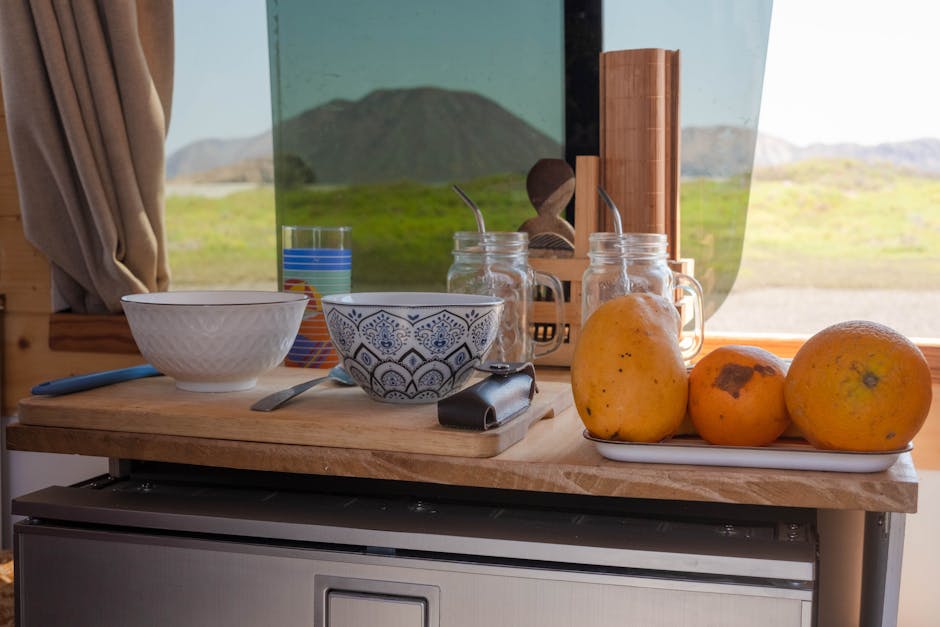Creating Outdoor Living Spaces That Serve as Extensions of Indoor Kitchens
Introduction
Blurring the lines between indoors and out is a growing trend in home design, and the kitchen is no exception. Creating an outdoor living space that seamlessly extends your indoor kitchen can dramatically enhance your lifestyle, offering a fresh-air cooking and dining experience. This article explores how to design and build these coveted outdoor extensions, boosting your home’s value and enjoyment.
Designing Your Outdoor Kitchen Extension
Planning and Zoning Considerations
Before you even think about grills and countertops, research local zoning regulations and homeowner association (HOA) rules. Permits might be required for structures, plumbing, or electrical work. Careful planning prevents costly surprises later.
- Check local building codes for outdoor kitchen requirements.
- Obtain necessary permits before starting construction.
- Consider setbacks and property line restrictions.
- Consult with your HOA for any specific guidelines.
Connecting the Spaces: Seamless Transition
The key to a successful outdoor kitchen extension is creating a fluid transition from the indoor kitchen. Consider these elements:
- Flooring: Use similar or complementary flooring materials to visually connect the spaces. Options include tile, stone, or treated wood.
- Doorways: Install large sliding glass doors, French doors, or even a bi-fold door system to completely open up the space.
- Color Palette: Maintain a consistent color scheme between the indoor and outdoor kitchens.
- Lighting: Extend indoor lighting styles (e.g., pendant lights, recessed lighting) into the outdoor area for a cohesive feel.
Essential Appliances and Features
Equipping your outdoor kitchen effectively is crucial for functionality and enjoyment. Think about these essential components:
- Grill: Choose a high-quality grill that suits your cooking style, whether it’s gas, charcoal, or a smoker.
- Countertop Space: Ample countertop space is a must for food preparation and serving. Consider durable materials like granite, concrete, or stainless steel.
- Sink: An outdoor sink with hot and cold water is incredibly convenient for washing produce and cleaning up.
- Refrigerator: A dedicated outdoor refrigerator keeps drinks and perishable ingredients cold.
- Storage: Waterproof cabinets and drawers are essential for storing cookware, utensils, and grilling accessories.
- Seating Area: Comfortable seating is vital for creating a welcoming space for dining and socializing.
Materials and Durability
Outdoor kitchens are exposed to the elements, so selecting durable, weather-resistant materials is critical.
- Countertops: Granite, concrete, and stainless steel are excellent choices.
- Cabinets: Marine-grade polymer, stainless steel, and treated wood are durable options.
- Flooring: Consider tile, stone, or composite decking.
- Appliances: Choose appliances specifically designed for outdoor use.
Adding Comfort and Ambiance
Beyond the functional elements, creating a comfortable and inviting atmosphere is crucial.
- Shade: Install a pergola, awning, or umbrella to provide shade on sunny days.
- Heating: Consider a fire pit, outdoor fireplace, or patio heater for cooler evenings.
- Lighting: Use a combination of ambient, task, and accent lighting to create a warm and inviting atmosphere.
- Landscaping: Incorporate plants, flowers, and greenery to enhance the natural beauty of the space.
- Sound System: Add outdoor speakers for music and entertainment.
Maximizing the Functionality of Your Outdoor Kitchen
Creating Zones for Different Activities
Divide your outdoor kitchen into zones for specific functions, such as:
- Cooking Zone: Dedicated to grilling, food preparation, and cooking appliances.
- Prep Zone: Countertop space and a sink for preparing ingredients.
- Dining Zone: A table and chairs for eating.
- Relaxation Zone: Comfortable seating for lounging and socializing.
Incorporating Smart Technology
Smart technology can enhance the convenience and enjoyment of your outdoor kitchen.
- Smart Grill: Monitor temperature and cooking progress from your smartphone.
- Smart Lighting: Control lighting with voice commands or a mobile app.
- Outdoor Entertainment System: Stream music and videos from your favorite devices.
Conclusion
Creating an outdoor living space that seamlessly extends your indoor kitchen is a rewarding investment that can transform your home and lifestyle. By carefully planning the design, selecting durable materials, and incorporating comfortable features, you can create an outdoor oasis that you’ll enjoy for years to come. Remember to prioritize functionality, aesthetics, and seamless integration with your existing indoor space to achieve the perfect outdoor kitchen extension.














Post Comment